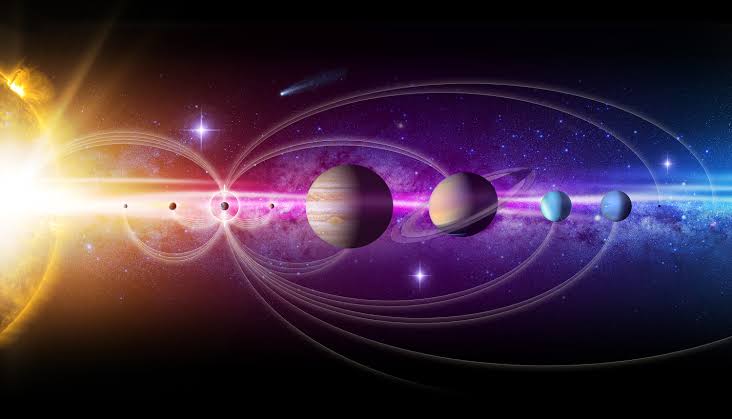
The Solar Planets- Unbelievable Facts
Space Science

879 views
0 likes
You will need to sign in before you can comment or like.
 Mercury
Mercury
- Mercury is the second densest and hottest planet.
- There are no known volcanic craters on Mercury.
- Orbits the sun faster than any other planet.
- Temperature on Mercury is 430 degree Celsius in day and -180 degree Celsius in night.
- Scientists have recently found ice under Mercury's North Pole.
- Launched in 1973, Mariner 10 was the first mission to Mercury. It took 2,700 photos covering almost 45% of its surface.
 Venus
Venus
- Planet nearest and closest in size to Earth.
- Only planet that rotates in clockwise direction.
- Venus is the brightest planet and brightest object in the night sky during morning and evening.
- In Venus, the Sun rises in the west and sets in the east.
- Atmosphere in Venus is almost made up of carbon dioxide.
- A Venusian day is longer than a Venusian year.
- Venus is called sister of the Earth because both are almost similar in size, mass density, volume and both condensed out at the same time and out of the same nebula.
 Mars
Mars
- Only planet which has 24 hour day like Earth.
- If you stood on Mars, you would see a pink sky.
- Mars's North Pole is composed of ice and South Pole of frozen CO2.
- Olympus Mons is the tallest mountain in the whole solar system.
- Mars had water once as evidenced by dried up water channels.
- The Valles Marineris Canyon would stretch across the USA.
- Mars has two lumpy moons Phobos and Deimos. Astronomers think they are asteroids pulled by Mars's gravity.
 Jupiter
Jupiter
- The great red spot is a permanent hurricane twice the size of Earth.
- Jupiter is shrinking slightly each year because of its own gravity.
- Hot molten materials exist under the icy surface of Jupiter.
- A man weighing 100kg on Earth would weigh 254kgs on Jupiter.
- Jupiter has 63 known moons. The largest four are- Calisto, Europa, Ganymede (Solar System's largest moon &is larger than Mercury) and Io.
- It is the largest, heaviest, fastest spinning planet having the most gravity.
- Jupiter is five times further than the Earth. That's why it is colder than Antarctica.
 Saturn
Saturn
- Saturn is the second largest, parent of the second largest moon and the least dense planet.
- Titan, the largest moon of Saturn is the only moon in the Solar System to have an atmosphere.
- Saturn's rings are less than 1km thick.
- Ice in Saturn's rings reflects light enabling us to see them well.
- Janus and Epithemus Saturn's two moons revolve around Saturn in the same orbit.
 Uranus
Uranus
- Uranus is the coldest and the third largest planet.
- The only planet to spin on its side & takes 84 years to orbit the Sun.
- The poles experience 42 years of summer and 42 years of winter. The rest 21 years are in complete darkness or light.
- Uranus is the farthest planet seen with the naked eye.
- William Herschel was the discoverer of Uranus, who named it George's star in honour of King George III. This name was not famous, so it was named Uranus.
- Uranus has 13 narrow rings and 20 known moons.
 Neptune
Neptune
- Windiest planet in the solar system.
- From Neptune, the sun looks as small as the stars from Earth.
- Triton, a large moon of Neptune, is the coldest place in the Solar System with teeth chattering -235 degree Celsius temperature.
- A year on Neptune is equal to 164.9 Earth years.
- In 1989, Voyager 2 discovered a storm the size of Earth which lasted several years.
- Neptune is named after the Greek god of the sea for its blue colour.
Comments